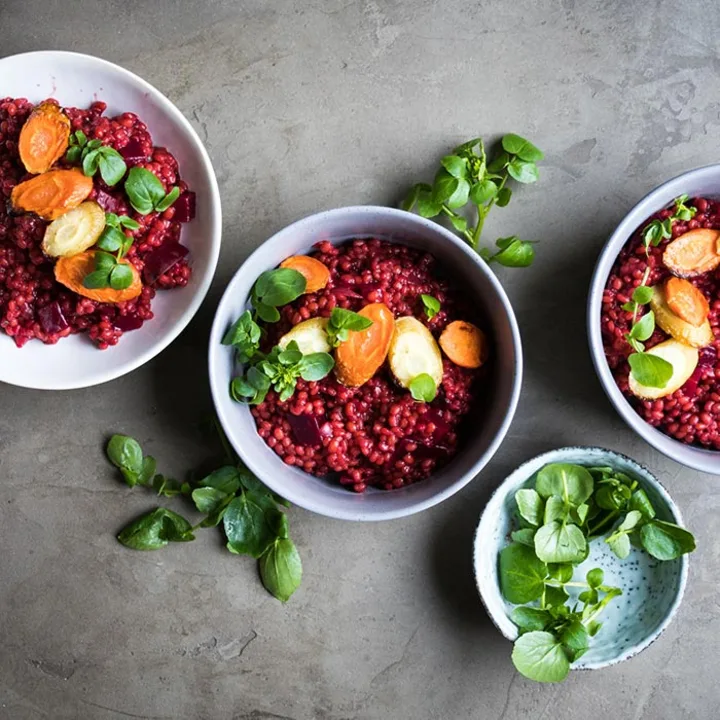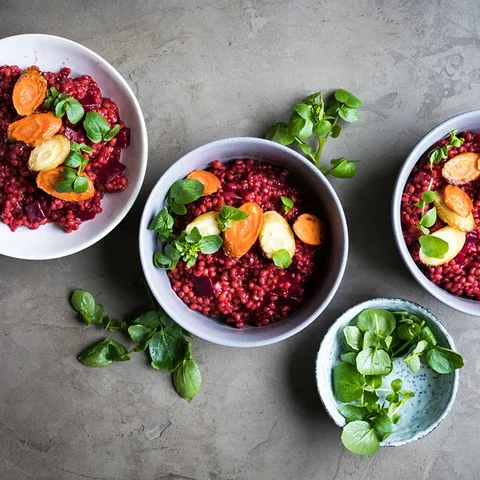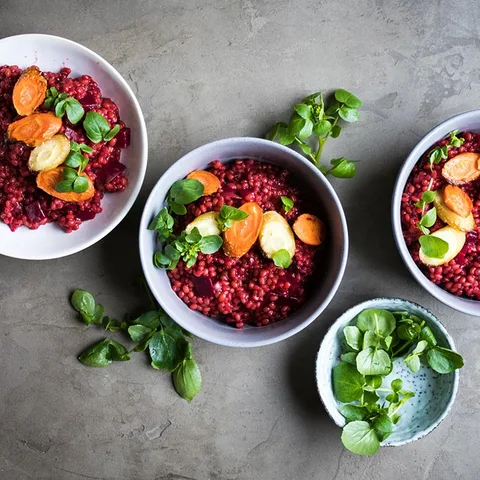Exploring the World of Food Photography: What is the Definition of the Term?
Food photography is a type of photography that focuses on capturing images of food. It can involve both still photography and motion photography, with the aim of creating visually appealing images that capture the beauty, flavor, and texture of food. Photographers use a variety of techniques to create the perfect shot, with the intent of conveying a particular mood or message.
The concept of food photography has become increasingly popular in recent years, as more people are exploring the world of food-related media. As a result, the term "food photography" has become a more widely used term. But what does it really mean?
Food photography is a form of photography that is specifically focused on capturing images of food. This type of photography typically involves still photography, as well as motion photography. Food photographers aim to create visually appealing images that capture the beauty, flavor, and texture of food. Some of the techniques used in food photography include the use of props and backdrops, lighting, and angles.
Food photography is also often used to convey a particular mood or message. Photographers can use their images to evoke a certain feeling or emotion, or to highlight a particular theme or concept. For example, a food photographer may use bright colors, or a particular angle or backdrop, to create a vibrant and cheerful image.
Food photography is becoming increasingly popular in the world of digital media. As more people explore the world of food-related media, the term "food photography" has become a more widely used term. Food photographers use a variety of techniques to create the perfect shot, with the intent of conveying a particular mood or message.
Though food photography is an art form, it is also a highly technical skill. Photographers must be familiar with the latest equipment and techniques to be able to create the perfect shot. They must be able to understand the different lighting and angles that are needed to create the desired effect, as well as how to use props and backdrops to add to the overall composition.
Food photography is an art form that has been around for centuries. With the rise of modern technology, however, it has become increasingly popular in recent years. As more people explore the world of food-related media, the term "food photography" has become a more widely used term. Food photographers use a variety of techniques to create the perfect shot, with the intent of conveying a particular mood or message.
Capturing the Magic of Food Photography: Tips and Tricks for Beginners
Food photography is an art form that requires a special set of skills to master. It takes an eye for composition and an understanding of light, color, and texture in order to capture the beauty of food. However, it is possible to learn these skills with practice and dedication. Here are some tips and tricks to help beginner food photographers capture the magic of food.
Choose the Right Equipment
The right equipment is essential for capturing great food photos. A good camera with a fast lens and a capable tripod will be needed to get the best images. In addition, a lightbox or other lighting equipment may be necessary to create the perfect lighting. Investing in quality equipment will pay off in the long run in terms of image quality.
Consider Your Camera Settings
The camera settings should be chosen carefully to ensure the best possible results. Use a low ISO setting for high quality images, and a wide aperture for more depth of field. Experiment with shutter speed to capture the motion of food or to freeze it in time. Finally, choose the right white balance for the type of light in the scene.
Use Composition to Tell a Story
Good composition is essential for telling a story with your food photographs. Look for interesting angles and lines to use in your composition that will draw the viewer's eye. Consider the background, foreground, and the food itself when creating a composition. Be sure to leave enough negative space to create a balanced image.
Play with Light and Color
Light and color are key elements of successful food photography. Natural light is often best for food photography, but it can be difficult to control. Try using reflectors and diffusers to control the light and create interesting shadows. When it comes to color, pay attention to the colors of the food and the background to create a harmonious image.
Edit Carefully
Editing is an important part of food photography. Make sure to use editing tools that enhance the image without changing its overall look. Adjust the exposure and color balance to create a pleasing image, and use sharpening and noise reduction tools to bring out the details. Finally, crop the image to create a better composition.
The Art of Food Photography: How to Create Delicious Visuals
Have you ever felt inspired to take a picture of your meal before you dig in? If so, you’re not alone. Food photography has become increasingly popular over the last few years with the rise of social media platforms. But the art of capturing delicious visuals goes beyond just pointing and clicking. Here are a few tips to help you capture those perfect foodie shots.
Pay Attention to the Lighting
Lighting is one of the most important aspects of food photography. Natural light is usually the best option; it’s softer and more flattering than artificial light. If you’re indoors, try to find a spot near a window with plenty of natural light. For outdoor shots, the best time of day to take pictures is during the golden hour, which is around sunrise and sunset.
Choose the Right Angle
When it comes to food photography, the angle you take your shot from is just as important as the lighting. A flat lay is a great way to show off the entire dish, while an overhead shot can be used to capture the ingredients and texture of the food. A close-up shot is ideal for showing off the details of a dish, while a slightly pulled back shot can highlight the plating aspects. Experiment with different angles to find the best one for the meal you’re photographing.
Don’t Forget the Props
Props can take your food photography to the next level. This could be anything from a colorful plate or bowl, to a coordinating napkin or placemat. You can also use other food items, utensils, or even plants to create an interesting composition. Just make sure the props you choose don’t take away from the food itself.
Edit Your Photos
Post-processing your photos is a great way to enhance the overall look of your food photography. A few simple edits can make a huge difference in the quality of your photos. Try adjusting the brightness and contrast, or adding a vignette to draw the viewer’s eye to the food. You can also use filters to give your photos a unique look and feel.
Have Fun With It
Food photography is all about having fun and getting creative. Don’t be afraid to experiment with different angles, lighting, and props. Don’t be afraid to make mistakes either – you never know what kind of unique shots you can come up with. With a little practice, you’ll be able to create delicious visuals that will make your friends and family drool.
Food Photography: How to Create Mouth-Watering Images
Food photography is an art form that requires skill and patience. With the right techniques and tools, anyone can take stunning food photos that will make your mouth water. In this article, we'll discuss the basics of food photography and how to create mouth-watering images.
Choose the Right Camera
The first step in food photography is choosing the right camera. Digital cameras are the best choice for food photography, as they allow you to adjust the settings to get the perfect shot. You want to choose a camera with a high resolution and a wide-angle lens. This will allow you to capture larger shots and get the most out of your food photos.
Find the Right Lighting
Lighting is essential for food photography. You want to use natural light, such as sunlight, as it will give your photos a brighter, more natural look. It's also important to use a diffuser to soften the light and reduce harsh shadows. You can also use a reflector to bounce light onto your subject and create a more even lighting.
Set The Scene
Once you have the right camera and lighting, it's time to set the scene. You want to create an atmosphere that will make the food look even more appetizing. You can use props, such as dishes and utensils, as well as background elements like textures or colors. You can also use food styling techniques, such as adding garnishes or sauces, to make your food look more appealing.
Edit Your Photos
After you have taken your photos, it's time to edit them. This is where you can bring out the best in your photos and make them look even more mouth-watering. You can use photo-editing software to adjust the colors, brightness, and sharpness of your photos. You can also add filters to give your photos a more professional look.
Is There A Term For Food Photography?
Yes, the term for food photography is "culinary photography". Culinary photography is a specialized type of photography that focuses on capturing the beauty of food. It is a popular form of photography, as it allows photographers to showcase their food in a unique and creative way.
The Best Camera Gear and Accessories for Food Photography
Food photography is an art form that requires the right kind of equipment to be successful. The best cameras and lenses for food photography shouldn’t be too expensive, but they should be able to produce great results. It’s also important to have the right kind of lighting and props to create the perfect atmosphere for your food shots.
Camera and Lens
The camera you choose for food photography should be able to capture both stills and video. A digital single-lens reflex (DSLR) camera is the best choice for food photography because it gives you the control and flexibility you need to get great shots. A good lens for food photography is a mid-range zoom lens with a wide aperture, such as an 18-55mm f/2.8 or 24-70mm f/2.8. These lenses will give you the flexibility to get close-up shots and wide-angle shots.
Lighting
Lighting is a key factor in food photography because it can make or break a photo. Natural light is best for food photography, but you can also use a variety of artificial lighting sources, such as strobes and continuous lighting. If you’re using a strobe, you’ll want to use a light modifier, such as a softbox, to soften the light and make it look more natural. Continuous lighting can be used as well, but it can create harsh shadows and won’t be as flattering as natural light.
Props
Props are an essential part of food photography because they can help create the perfect atmosphere for your shots. Plates, platters, utensils, and other food-related items can be used to add interest and texture to your photos. You can also use props to set the mood, such as a tablecloth for a romantic dinner setting or a cutting board for a casual picnic.
Is There A Term For Food Photography?
Yes, there is a term for food photography: gastronomic photography. Gastronomic photography is the art of capturing images of food and drinks in a way that is both visually appealing and appetizing. It is used in advertising, cookbooks, magazines, and websites to showcase the beauty of food and drinks. Gastronomic photography requires the right camera gear and accessories, as well as the right lighting and props, to create beautiful images.


